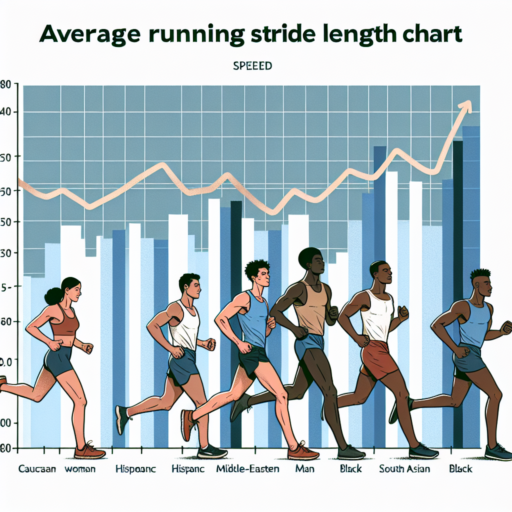Understanding Track Lane Distances: A Comprehensive Guide
When it comes to athletics, the precision in understanding track lane distances plays a pivotal role in both an athlete’s training and competition strategy. Track layouts are meticulously designed to ensure fairness in races, accounting for the inherent differences in distances that come from racing in separate lanes. Each lane on a standard track offers a unique distance, making the consideration of lane assignments crucial for athletes aiming for peak performance.
The innermost lane of a standard 400-meter track, often referred to as Lane 1, outlines the shortest path along the track. As the lanes progress outward, each subsequent lane becomes slightly longer to compensate for the initial advantage of an inner position. This added distance is meticulously calculated, ensuring that athletes in all lanes cover an equitable distance during a race. The International Association of Athletics Federations (IAAF) prescribes specific formulas for these calculations, ensuring global standardization across athletic competitions.
Athletes and coaches leverage this knowledge to tailor training and race strategies, accounting for the subtle yet impactful differences between lanes. Understanding these distinctions is vital, particularly in races that encompass multiple laps around the track, where lane assignments can significantly influence the outcome of a race. Through rigorous training and strategic planning, competitors can optimize their performance, regardless of their lane assignment.
The Impact of Lane Number on Running Distance in Athletics
Understanding the role of lane number in running distance within the domain of athletics reveals significant insights into competitive strategies and performance optimization. Different lanes on a standard track might seem identical to the casual observer, but the variance in curvature and distance can impact an athlete’s race time and energy expenditure.
Perceived Distance Variations Across Lanes
In track and field competitions, lane assignment is crucial due to the perceived distance variations inherent in the design of the track. Athletes running in inner lanes are required to navigate tighter curves compared to those in outer lanes, a factor that can potentially influence their speed and pacing strategy. Although the actual distance of standard tracks is precisely calibrated to ensure fairness, the psychological and physical aspects of running in different lanes can subtly affect performance.
Energy Expenditure and Lane Number
Competitors need to master the art of energy conservation and expenditure during a race. Running in an outer lane requires a slightly different pacing strategy due to the increased distance and decreased curve tightness. This variance necessitates a nuanced understanding of energy distribution, as maintaining an optimal balance between speed and endurance becomes crucial, especially in longer races. Athletes and coaches must, therefore, pay keen attention to lane assignments when devising race strategies.
Calculating Track Lane Distances: Formulas and Factors
Understanding how to calculate track lane distances is essential for track and field athletes, coaches, and enthusiasts. The calculation involves specific formulas and considers various factors that can affect the overall length of each lane. This mathematical approach ensures fairness in races, accounting for the added distance in outer lanes.
Understanding the Basic Formula
The fundamental formula for calculating the distance of a track lane starts with the innermost lane, which is standardized to 400 meters in a standard track. To calculate the distance of outer lanes, one must consider the lane width and add this measurement to the inner lane’s circumference. The formula looks something like D = 2π(R + (n-1)L), where D is the distance, R is the radius of the inner lane, n is the lane number, and L is the width of the lane.
Key Factors Affecting Lane Distance
Beyond the basic calculation, several factors influence the actual distance of each track lane. Track shape and surface material can alter the precision of the calculation. Additionally, the width of the track’s lanes can vary slightly from one venue to another, impacting the overall distance. It’s critical to consider these variables to achieve an accurate measurement for competitive purposes.
Accurately calculating track lane distances requires a thorough understanding of the basic formulas and an awareness of the factors that can influence these measurements. By applying this knowledge, athletes and coaches can ensure that training and competition conditions are fair and standardized.
The History and Standardization of Track Lane Distances in Competitive Running
The evolution of track lane distances in competitive running has been a significant aspect of the sport’s history, marked by a series of developments aimed at standardizing these distances. In the early days of track and field, no standardized distances existed, leading to confusion and inconsistency in competition results. The need for a uniform approach became evident as the sport gained popularity worldwide.
In 1912, the International Amateur Athletic Federation (IAAF), now known as World Athletics, took on the role of governing body for track and field sports, initiating the journey towards standardization. By the mid-20th century, standard track sizes and lane distances were established, with the most common outdoor track circumference set at 400 meters, divided into eight lanes. This standardization was crucial in ensuring fairness and comparability of results across different competitions and regions.
Adoption of Synthetic Tracks marked another pivotal moment in the history of track and field. The introduction of synthetic surfaces in the late 1960s, replacing cinder and other natural surfaces, brought about a uniformity in track conditions that further enhanced the fairness in competition. It also allowed for the accurate marking of lane distances, ensuring that each lane on an oval track had a precisely calculated length, accounting for the stagger in races ranging from 200 to 800 meters.
Over the years, the distances between lanes have been meticulously calculated to ensure that no runner gains an unfair advantage. The standardization of track lane distances has been integral in making competitive running a universally fair and organized sport. This ongoing process reflects the sport’s global appeal and the dedication to maintaining integrity at its core.
How to Measure and Mark Track Lane Distances Accurately
Measuring and marking track lane distances with precision is vital for ensuring fairness and standardization in track and field competitions. The process can seem complex, but breaking it down into manageable tasks makes it more approachable. The goal is to maintain the integrity of the sport by creating an even playing field for all athletes.
To start, it is essential to understand the importance of having accurate measurements for each lane. Given that the inner lanes on a track are shorter than the outer ones, increments are added to the outer lanes to equalize the distances. This adjustment guarantees that each athlete runs the same distance, no matter the starting position. Utilizing a measuring wheel or tape is the recommended method for these measurements, ensuring precision across the board.
In addition to the initial measurement, the way tracks are marked plays a crucial role in the accuracy of the lane distances. The application of lane markings should follow the guidelines set by the relevant governing body, such as the International Association of Athletics Federations (IAAF). Properly placed markings contribute to the clarity of the racing paths and help prevent athlete confusion during competitions. Using specialized track marking paint and tools can significantly enhance the accuracy and durability of these markings.
Track Lane Distances: Tips for Runners and Coaches
Understanding track lane distances is crucial for both runners and coaches as it plays a key role in training strategy and race day performance. The standard track offers multiple lanes, each with a slightly different distance due to the geometry of the curves. Runners in inner lanes cover less ground compared to those in outer lanes, which can affect pacing, strategizing, and ultimately, race outcomes.
For coaches, knowing the exact distances of each lane helps in designing more effective training sessions. It’s important to incorporate exercises that adapt to these variations, ensuring athletes are well-prepared for any lane assignment during competitions. Coaches can leverage this knowledge to tailor workout plans that simulate race conditions, adjusting for the specific demands of each track lane.
Runners, on the other hand, can benefit from understanding how lane assignments might influence their performance. Adjusting pacing strategies according to their lane can make a significant difference. For instance, athletes in outer lanes might need to start slightly faster to compensate for the additional distance, while those in inner lanes should focus on maintaining a consistent pace. Awareness and strategic adjustments to these nuances can lead to improved performance and more successful races.
Comparison of Indoor vs. Outdoor Track Lane Distances
Differences in Track Design
One of the key factors that contribute to the differences in lane distances between indoor and outdoor tracks is the design and size of the track itself. Outdoor tracks typically follow the standard size of 400 meters in circumference, commonly accommodating eight lanes. Indoor tracks, however, usually measure less due to space restrictions, with a standard size being 200 meters in circumference. This fundamental difference in size leads to variation in lane distances, affecting the strategies athletes employ during races.
Impact of Lane Number and Track Curvature
Moreover, the number of lanes and the curvature of the track play significant roles in the comparison. Outdoor tracks, with their broader curve, allow for less deviation in lane lengths. However, indoor tracks, which have tighter curves and often more lanes to accommodate athletes, result in more pronounced differences in lane distances. This is due to the inner lanes having a smaller radius compared to the outer lanes, necessitating staggered starts to ensure fairness in race distances.
Calculating Lane Distances
- Outdoor tracks typically add approximately 7 meters for each lane, with lane one being the baseline at 400 meters.
- Indoor tracks, due to their curvature and reduced size, can see an increase of up to 4-5 meters per lane, making precise calculations pivotal for fair competition.
This variation emphasizes the importance of athletes being aware of these differences and adjusting their techniques and strategies accordingly, especially when transitioning between indoor and outdoor seasons.
World Records and Track Lane Distances: Analysing the Correlation
The relationship between world records and track lane distances in athletics has always been a subject of intense scrutiny and debate among experts. This unique analysis seeks to uncover patterns and insights into how the position of an athlete in different track lanes influences record-setting performances. Given the precision of timing instruments and advancements in track technology, understanding this correlation is more relevant than ever.
Impact of Lane Assignment on Performance
Studies suggest that lane assignments, especially in races that do not involve lane merging (e.g., the 400m), play a significant role in an athlete’s performance. Variables such as the curve radius and the athlete’s ability to maintain speed while cornering are crucial. Athletes assigned to inner lanes face a tighter curve, potentially impacting their speed due to the need to apply more centripetal force. Conversely, outer lanes present a gentler curve but require a longer distance to be covered. This dynamic offers a fascinating insight into the strategies athletes use to optimize their performances based on their lane assignments.
Reviewing Historical Data and Records
An examination of historical data from major competitions reveals a pattern: most world records in events such as the 200m and 400m sprints have been set by athletes running in middle to outer lanes. This trend suggests that the balance between the curve’s difficulty and the distance covered is optimal in these lanes. However, it’s essential to consider other factors, such as wind assistance and psychological aspects of viewing competitors, that could also influence these outcomes.
Analyzing the correlation between world records and track lane distances presents an intriguing aspect of athletic performance, shedding light on the strategic elements that go beyond mere physical capabilities. As data collection and analysis techniques become more advanced, the ability to understand and predict these patterns will only improve, offering fascinating insights into the future of track and field competition.
No se han encontrado productos.
Training Techniques for Different Track Lane Distances
Preparing for a track event requires a keen understanding of the specific demands of different track lane distances. Each distance, from the sprint lanes to the mid and long-distance tracks, challenges athletes in unique ways. Therefore, tailoring your training techniques to match these demands is essential for improving performance and achieving personal bests.
Short Distance Sprint Training
Short distance sprints, typically the 100m and 200m, demand explosive power and acceleration. High-intensity interval training (HIIT) is crucial for developing the speed and strength needed for these events. Incorporating plyometric exercises into your training regimen can significantly enhance your explosive power, while sprint drills focusing on starts and acceleration will refine your technique and efficiency on the track.
Mid-Distance Running Techniques
For mid-distance races like the 800m and 1500m, a combination of speed and endurance is key. Athletes should focus on tempo runs to increase lactate threshold, allowing them to maintain a higher speed for longer. Interval training at race pace or slightly faster, with shorter recovery periods, helps in building both speed and endurance. Additionally, incorporating strength traininginto your routine improves overall muscle endurance, critical for the final push in mid-distance races.
Long-Distance and Marathon Preparation
Long-distance events, including 5000m, 10000m, and marathons, require a significant focus on endurance training. Long, slow runs are the backbone of any long-distance training program, aiming to improve cardiovascular efficiency and increase stamina. However, it’s also important to integrate speed work sessions to enhance your pace capability and race strategy. Strength training, with an emphasis on lower body and core, aids in maintaining form and reducing injury risks over longer distances.
Frequently Asked Questions About Track Lane Distances
One of the more nuanced aspects of athletics that often piques curiosity is the specific distances associated with various track lanes. This interest stems from the desire to understand how competitive fairness is maintained across lanes in track events. Each lane on a standard running track is precisely measured to ensure that all athletes run the same distance, regardless of the lane they are in. This is achieved through staggered starts that compensate for the varying circumferences of the lanes.
Why Do Track Lane Distances Vary?
The reason behind the variation in track lane distances lies in the geometry of the track itself. A standard outdoor track features a 400-meter loop, designed in an oval shape. As you move outward from the innermost lane, the circumference of each successive lane increases. To equalize the running distance for all athletes, starting lines are adjusted. This ensures that whether an athlete is running in lane 1 or lane 8, they are covering an equivalent distance.
How Are Lane Distances Calculated?
The calculation of track lane distances involves a precise formula that accounts for the lane width and the radius of the innermost lane. This formula ensures that the stagger for each lane correctly equals the distance of the inner lane, providing a level playing field for all competitors. An understanding of these calculations is essential for coaches, athletes, and track designers alike, emphasizing the importance of accuracy in the sport of track and field.




